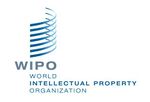WIPO
 | |
| Type: | Non-Profit |
| Founded: | 1967 |
| Headquarters: | Geneva |
| Country: | Switzerland |
| Employees: | 1001-5000[1] |
| Website: | wipo.int |
| Facebook: | WIPO Facebook |
| LinkedIn: | WIPO LinkedIn |
| Key People | |
| Francis Gurry, Director General | |
The World Intellectual Property Organization (WIPO) it is a specialized United Nations agency tasked with the development of accessible and harmonious systems of Intellectual Property.[2] It aims at rewarding creativity while stimulating unique economic developments, with a mind towards public interests.[3]
History[edit | edit source]
The WIPO Convention was signed in 1967, although the organization did not begin proper functioning until 1970.[4] It was established by WIPO Convention with reference from its Member States. The main objective of WIPO was to enhance the protection if IP around the globe. This is carried out by cooperation amongst all member states as well as other international organizations. In 1974, it became a part of the United Nation.[5]In 1996, it entered into an agreement with the WTO (World Trade Organisation) thereby expanding its trade role.[6]
Organization[edit | edit source]
Stakeholders[edit | edit source]
This organization works with various stakeholders to achieve its goals. These stakeholders include non-governmental organizations, inter-governmental organizations and representatives of civil society. It also includes representatives of industry groups. The meetings are attended by more than 250 NGOs and IGOs.
Member States[edit | edit source]
WIPO currently contains 184 member states.[7] This constitutes more than 90% of the countries around the world.
The working of WIPO[edit | edit source]
WIPO works in collaboration with its members. There different level of heads that work together to fulfill the aims of the organization. The strategic route of WIPO is determined by the Member States. The activities and transactions of the organization are enacted by the Director together with the Member States. The meetings are carried out in committees, Assemblies, working groups. These three wings constitute the decision making bodies of WIPO. The Secretariat of WIPO has its base in Geneva. As WIPO constitutes more than 90% of the countries of the world, it has world famous IP practices and law specialists under its wing. Celebrated specialists in economics, public policies, IT and administration are included in the organization. This gives WIPO a rich ‘think tank’. Every Member State has a Secretariat who is responsible for conducting and organizing meetings and events. Implementation of decisions and administering the global IP registration systems is conducted by Secretariat. It is also responsible for executing the plans and programs that help in achievement of WIOP’s aims. It also provides expertise solution to its members.[8][9]
WIPO Program and Budget plan[edit | edit source]
WIPO has to present a Program and Budget plan in every two years. The document is sent to the Member States for their approval. This Program and Budget plan contains performance measures, particulars of the objectives and budget planning of all the events of the organization. The organization is basically self-financing and a major part of the finance is spent on Organization events. The remaining 10 percent is spent on revenue from the events of the contributing States. The wings of Internal Audit and Oversight Division together with an Audit Committee and External Auditor help in proper functions of WIPO. These help in smooth functions of the organization and help in carrying out the events.[10]
References[edit | edit source]
- ↑ Fsfe
- ↑ Reports on International Organizations
- ↑ Reports on International Organizations
- ↑ Patent Lens-Key Agreements and Organisations in Intellectual Property
- ↑ Patent Lens-Key Agreements and Organisations in Intellectual Property
- ↑ Member States of WIPO
- ↑ Reports on International Organizations
- ↑ Working at WIPO
- ↑ Reports on International Organizations
